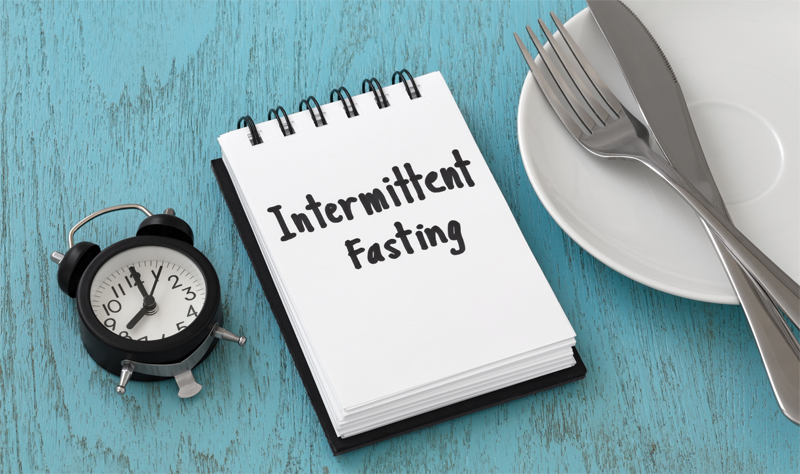
However, the best techniques that have proven fruitful include exercising, drinking enough water, and changing your diet. You can find a number of approved combinations and chose the one that meets your needs. In addition, you might want to adjust your eating schedule and how much you take in at a time.
This article explores all you need to know about intermittent fasting and how you can use it to lose weight.
What Is Intermittent Fasting
Contrary to what some people think, intermittent fasting is an eating schedule rather than a type of diet. This pattern cycles within the normal meal periods (breakfast, lunch, and dinner).
There are many methods under intermittent fasting that you can use to meet your objectives. Although these techniques have different designs, they all involve splitting your normal eating plans into given fasting sessions. Also, if you decide to use any of them, you still need to have a well-balanced diet meal to streamline your project.
Here the three most popular intermittent fasting methods:
- 5:2 diet: with this plan, you take two non-consecutive days that you’ll be consuming 500-600 calories, while eating normally on the other five days.
- Eat-stop-eat: this demands that you fast once or twice within seven days for 24 hours
- 16/8 method: this involves splitting your day into two (8 and 16 hours respectively). You’ll then need to fast for 16 hours then eat within the remaining 8 hours. As such, you might need to forego your breakfast.
How Intermittent Fasting Help You Lose Weight
So, how exactly does fasting help lose weight? First, it’s important to note that the normal metabolic process in a human body involves carb-burning. In other words, the carbohydrates are broken down into soluble particles. However, when fasting, this switches to fat-burning, which is all about breaking down the available fat into sugar.
That being said, before going into intense intermittent fasting, you ought to keep the factors below in mind. Doing so allows you to lose weight in a healthy manner.
1. Choose Your Ideal Plan
As you can see from the list above, each intermittent fasting plan has a different design. As such, you’ll need to find the one that works best for you.
Some things to consider while making this selection include your work schedule, health status, and any other circumstances that may impact your goals. It’s also advisable that you consult your healthcare specialist to find out whether your selected option is the best, considering your current condition if any.
Perhaps the most positive thing about this weight-losing trick is the fact that you can easily find a life apps intermittent fasting guide. Regardless of which method you choose, there’s always step-by-step mechanics of how to start. In addition, you can use an app tracker to check and analyze your statistics with reference to your achievements at the time.
Once you’ve decided on which method to use, slowly work up to your target schedule. It’s not a must that you meet your objectives within the first week. For instance, you can train your body by fasting for 12 hours overnight. This is an easy exercise that you can try without too much straining. From there, you can gradually increase the number of hours from 12 to 14 or 16 until you hit the desired time.
2. Eat Well
One thing to keep in mind is that fasting doesn’t necessarily mean starving yourself. In fact, failing to take enough nutrients will work against your project. As such, it’s important that you consume a balanced diet during your feast days. In those meals, increase the number of lean proteins if needed. This will improve your muscle mass and satiety.
Since you’re committed to losing weight, you should try and change your lifestyle. For instance, if you’re used to taking in a lot of fast foods, you should stop the habit as soon as possible. Remember, intermittent fasting is all about burning the excess fat in your body. Still on this subject, drink a lot of water to aid the metabolic processes in the body.
3. Ensure Consistency
As stated earlier, starting a weight loss project means changing your lifestyle. As such, there’s a high probability that you might be tempted to go back to the old habits along the way. Doing so will render all your current efforts meaningless.
That said, when you start any of the intermittent fasting schedules, work on maintaining your consistency. Otherwise, it’ll be difficult to see any results at the end of the day. So, what should you avoid to ensure that you remain on track?
- Food that contains a lot of sugar might provide you with energy but it’s short-lived. Another disadvantage is the fact that it has a lot of calories with little nutritional value.
- Reduce caffeine and salt intake as this can cause your body to lose a great amount of fluids, which is something you wouldn’t want while fasting.
- Fried and fatty foods should also be a no-go zone as they may increase the impact of fatigue.
Conclusion
Intermittent fasting has been associated with weight-losing strategies as many people prefer to use it because of its simplicity. It’s an advancement of your usual eating patterns and ensuring that the body gets into a fasting mode. In this situation, the metabolic process in your body will burn excess fat. Consequently, it reduces several risks, including those related to your blood pressure and heart health.
The first step into intermittent fasting is finding the right plan that perfectly fits your lifestyle. Regardless of the method you choose, make sure to take a balanced diet during your ‘feast’ hours. Also, try as much as possible to avoid foods that don’t have a fundamental role in your health improvement project.
Comments
comments